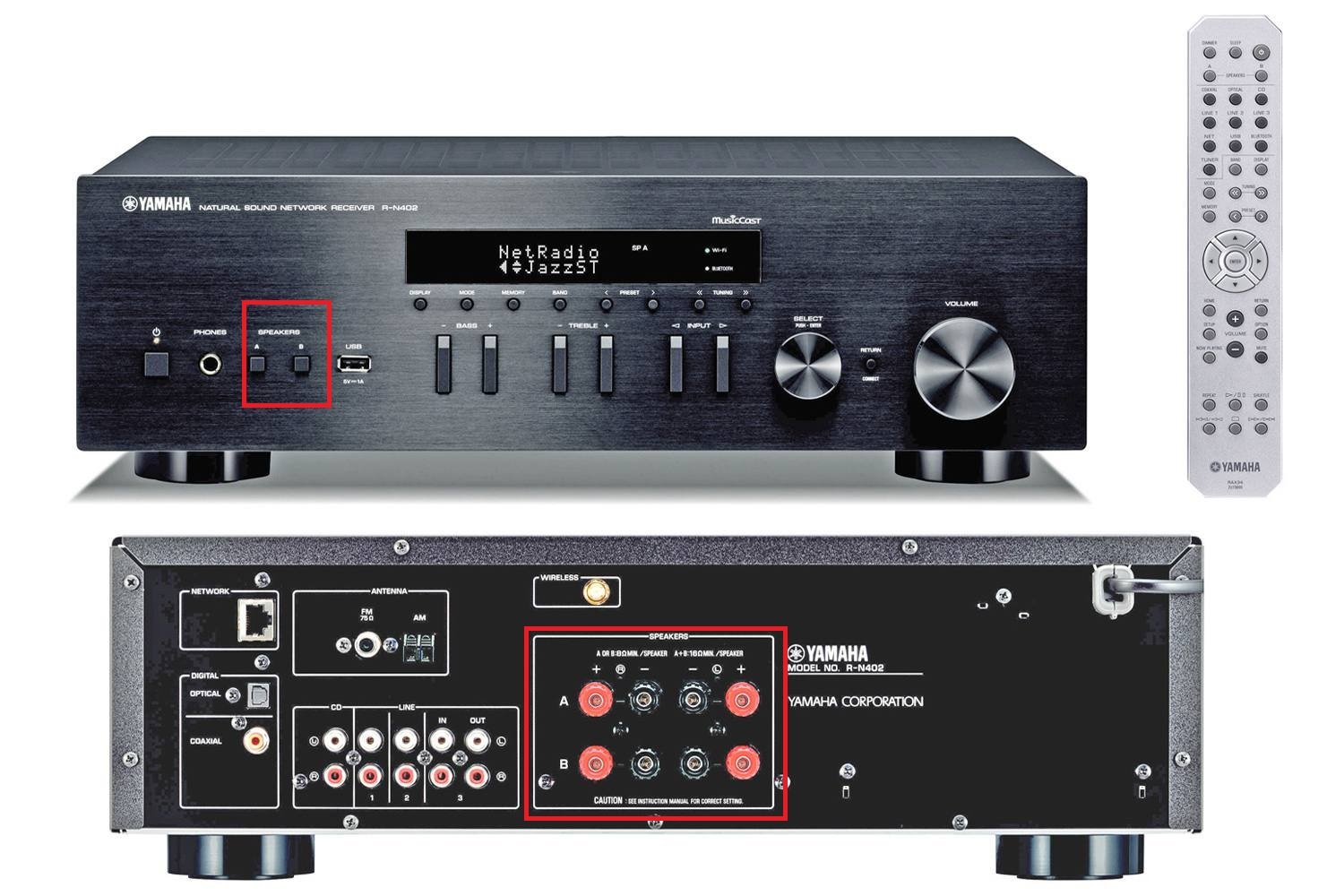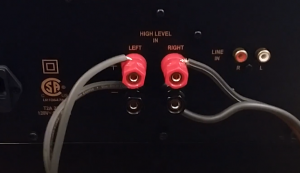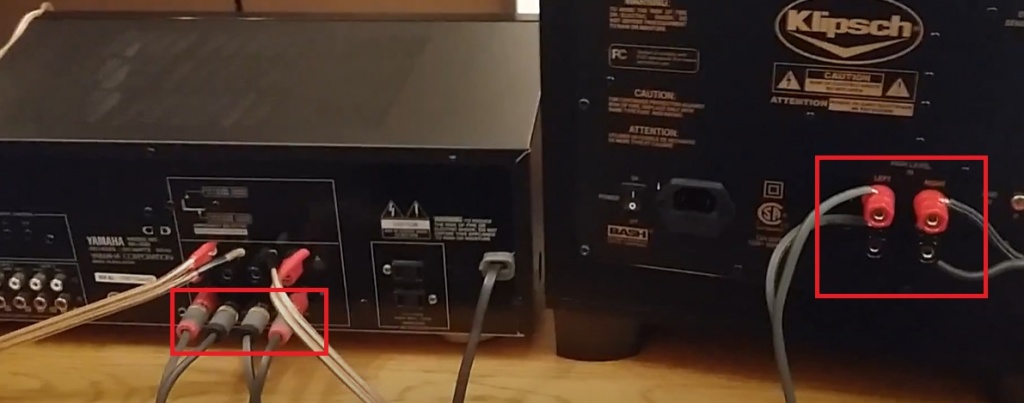How To Add A Subwoofer To A Stereo System
Subwoofers are ofttimes integrated with home theater sound systems to allow them to reproduce a wider range of frequencies. This lets the audio systems account for the entire variety of notes that your audio source signal is sending forward. Without an integrated subwoofer, you may miss out on different audio frequencies that are a part of the original soundtrack and your overall listening experience may be missing some important components such as the bass notes. While this technology is more commonly incorporated in larger environs sound or domicile theater setups, it can be integrated with stereo amplifiers to improve your sound quality also.
While home theater and AV receivers are hooked to the subwoofer with a single interconnection cable, stereo receivers and pre-amps do not take the aforementioned bass management options. AV receivers for instance let yous direct the bass frequencies to the speakers through a channel that tunes the frequency ranges before they reach the output. In a stereo amplifier setup, a more loftier level (or surface level) of connections are needed due to this lack of internal bass direction. When connecting a stereo setup, due to the ii channels, the connections volition all demand to be doubled upwardly.
Some subwoofers come with internal amplifiers already integrated but if yours does not take ane or your internal amplifier is not as strong, you lot tin can opt to integrate a separate stereo amplifier into your sound system. If you accept a two-channel integrated amplifier or a 2-channel stereo receiver without an RCA subwoofer output to go to a powered subwoofer, this guide will show you lot how to integrate that with a two-channel integrated amplifier with only the B speaker's output. The Speaker A output will be connected to front speakers.
Hardware Requirements Before You Begin
Before yous brainstorm, you need to check the following on your ii-channel stereo receiver or two-channel stereo integrated amplifier (such every bit these): you must take speakers A and B on this device. In this guide, your speaker A output will feed into your front speaker setup. Your speaker B output is what we will use to integrate it with the active amplifier built-in subwoofer. Head onto the back of your two-channel receiver amplifier and discover that there is no subwoofer output visible here. Instead, you will detect the speaker A output (right and left) and the speaker B output (right and left).

On your powered subwoofer, instead of simply the RCA low-level inputs, you will need to have high-level inputs to connect the left and correct speaker wires. Head onto the dorsum of your powered subwoofer and find the left and correct high-level input ports.
Across this, the other equipment you will demand for this setup is 2 sets of two cable speaker wires.
Once you lot have ensured that your equipment meets the above 2 conditions and you've got your speaker wires prepare to go, y'all can keep with the connections outlined ahead.
Set-Up
- Ensure that your subwoofer and stereo amplifier are disconnected from whatever power source and switched off.
- Connect your speaker A outputs from your two-channel output receiver to your forepart speaker setup.

Powered Subwoofer input terminal connections with Speaker B wires. Image: TeeJay - Take a set of speaker wires and connect it from the positive and negative terminals of the correct-side output of speaker B on the back of your ii-channel stereo amplifier receiver to the positive and negative terminals of the right side high-level input of your powered subwoofer. Be mindful of the positive/negative and right/left markings and match them up exactly. You lot can set in straight wires or use ones with banana plugs for your ease.
- Repeat the higher up step with another set of speaker wires for the left output of your two-channel stereo amplifier receiver and powered subwoofer high-level input.
- Advanced customization: if you want to become in and tweak your subwoofer, start out with the following settings. For 4 inch or smaller subwoofers, set the crossover frequency (used in the intrinsic depression laissez passer filter) to 100 Hz or above. For subwoofers that are five inches or bigger, apply an 80 Hz crossover frequency or below. This step is optional. Most subwoofers come up with a moderate base setting already configured.
- Before powering on your system, place it somewhere shut to your media screen. Since the subwoofer primarily works to boost your bass and lower tone frequencies, the placement of this speaker system is not that pivotal in determining how the sound comes across. With college pitched frequencies, you take to pay attention to your speaker fishing and potential echo or bounce back to get the most out of those tones. With a subwoofer, still, this is much more than simple and your speaker can arbitrarily be placed anywhere. Keeping information technology close to the screen and facing the direction where the audio is required is what is recommended.
- Connect your amplifier to a power source with the switch still off.

2-Channel Stereo Receiver and Powered Subwoofer connections on the Speaker B ports. - Cheque your wiring one last time as explained in the steps above. Be sure that the connections are firmly and correctly placed.
- Once everything looks good to go, turn on the power.
- Turn on Speaker A and discover the audio on the front end speakers. Plow this off and then turn on Speaker B and notice the bass on the subwoofer. Turn both on simultaneously to get the full bass amplified output.
- Adjust the subwoofer's volume to bring information technology up to the level where you can hear the bass and low notation frequencies. If you would like more bass notes, turn this upward higher. Arrange the principal volume punch on the speaks for bodily volume and the subwoofer book punch for the pronunciation of the bass frequencies.
Verdict
One time you have completed the initial setup, you lot volition accept to heed to a variety of songs with different bass levels to go back and adapt the cross over frequency and subwoofer volume. This will have a while to optimize just correct for the bulk of the music or sound you intend to mind to. The crossover frequencies specified in the setup procedure earlier are the common standard frequencies for subwoofer and stereo amplifier integration. For your item gustatory modality, however, you may choose to tweak these a scrap.
How To Add A Subwoofer To A Stereo System,
Source: https://appuals.com/how-to-connect-a-subwoofer-to-an-integrated-stereo-amplifier/
Posted by: rossoffied.blogspot.com


0 Response to "How To Add A Subwoofer To A Stereo System"
Post a Comment